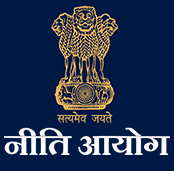Meta-governance: Role of metaverse in India’s E-governance
What is Metaverse?
To understand the metaverse, we have to travel back to 1992, when the word “Metaverse” was first coined by Neal Stephenson in his science fiction novel – “Snow Crash”, where humans, in their Avatars, interacted with each other in a virtual space. Metaverse is a combination of two words, “meta” (which has its Greek origin and which means beyond or across) and “universe”. It is a virtual realm where physical, augmented, and virtual reality converge. To put it simply, in the metaverse, you will experience the internet in 3D using special AR/VR devices and other body gears.
Indians have caught the metaverse fever. A couple from Tamil Nadu hosted India’s first wedding reception in metaverse. Punjabi singer Daler Mehndi’s 73rd Republic Day virtual performance made him the first Indian artist to enter the virtual world to entertain his fans. Jio has announced its investment of $15 million in Silicon Valley-based deep tech startup, Two Platforms (Founder- Pranav Mistry) for a 25% equity stake. The interest in the tech is just rising.
With the private sector’s aggressive campaign into the metaverse, it is the right time for the government to create the right policy background for its operation and leverage the metaverse for public services. With the advent of Information and Communication Technology (ICT), govt. had leveraged the web 2.0 at the right time and started providing much of its services through the internet. A similar opportunity with web 3.0 stands in the face of the government.
The question is – How would the meta-governance model of government look like? To get to the answer, let us first understand what E-governance is.
What is E-governance?
E-governance is the usage of ICT by the government to provide government services and achieve governance objectives. In his paper, Dr Arie Halachmi, ‘‘E-Government Theory and Practice: The Evidence from Tennessee", had given five crucial models of E-governance. Meta-governance, including its challenges and threats can be visualized through these E-governance models.
Broadcasting Model
The broadcasting model talks about the dissemination of helpful governance information, through ICT. The government could set up a meta-division under its broadcasting agencies – Doordarshan, All India Radio, Lok Sabha TV, Rajya Sabha TV etc. or could setup its own meta-gov. In the future, through the meta-Mann ki Baat, the digitized Avatar of the Prime Minister (PM) could be sitting right in front of you. The impact created by a campaign run on the meta-Mann ki Baat (like Selfie with Daughter, Incredible India and Fit India) could potentially have more impact. Similarly, the meta-Pariksha pe Charcha can give students, parents or teachers a chance to hang out with the digitized Avatar of the PM! The broadcasting model would be a one-way channel, and though people would be in the same room where the event is happening, they will not be able to ask questions and interact with the authorities.
Critical flow Model
In the critical flow model of E-governance, essential information is released to targeted audience through ICT. Meta-help desks or meta-division in a particular ministry/ other govt. agencies can help in providing the critical data required. The Govt. could inform the Indian Medical Association (registered society) & other such bodies in a meta-meet about the – Rs. 50 lakh insurance coverage to doctors. Similarly, the government could disseminate information about the update on the pension scheme to all the pensioners in a meta-room.
Comparative analysis Model
The comparative analysis model is significant for developing countries and can empower people. In this model, benchmark parameters [Innovation index, School Education Quality Index] are created, and then regional parameters at District, State & National level are compared with the benchmark parameters. The PM and the CMs of all the states can collaborate in the metaverse where every CM describes their best governance practices. The CM can explain how an intervention helped improve the outcome. In the meta-meet, a CM could make a comparison over a time scale to get a snapshot of the past and present situation on specific pre-decided benchmarks (for example- Infant Mortality Rate [IMR], Maternal Mortality Rate [MMR] etc.).
E-advocacy/ Mobilization and Lobbying Model
This model builds online forums and gathers the public’s opinion for a particular policy. This model helps create a diversity of virtual communities, and the ideas, expertise and resources are accumulated through this virtual form of networking. It makes use of human resources beyond geographical & bureaucratic barriers.
In future, the Ministry of Commerce officials could sit in a virtual-room with the Federation of Indian Chamber of Commerce and Industry (FICCI) and make decisions on business policies. Similarly, the Ministry of law could meta-meet Bar Council of India (BCI) representatives, and the Ministry of education could meta-meet All India Federation of University and College Teachers (AIFUCT) for effective policy formulation.
Interactive services Model
This model enables a two-way interactive flow of information among the participants. It is mainly used in providing public services online to the public, and it is a Government to Consumer to Government Model (G2C2G Model). In the future, an RTO officer could inspect your vehicle and the submitted documents while sitting at your home plugged into your VR headset in the meta-RTO. The public official’s Avatar in the metaverse will provide convenient consultations and civil service, available only through the Municipal corporations.
The interoperability of the ecosystem would be such that the same user will swiftly move through the Passport office, RTO and Municipal corporation office without logging in into the individual platforms. It will be one unified, continuous experience for the citizens. Challenges in front of government for building the metaverse The foremost challenge to overcome is the age-old battle of tradition v/s technology.
Historically, it is proven that governments have been slow-paced and reluctant to adopt new technology, either due to their archaic ethos or due to cost and infrastructure challenges.
Building a pragmatic, robust and accessible meta-governance infrastructure is wrought with difficulties. At the very least, it will require a 5G connection to provide a safe and reliable experience; unfortunately, most rural communities are still struggling with acquiring and maintaining a secure 3G connection. Then there is the paramount energy issue needed for the metaverse to operate. The amount of energy currently available is inadequate compared to the energy warranted by the metaverse. How do we plug this void? Should we use alternate energy sources like Hydrogen fuel cells?
Even if we can solve this issue, it is just a drop in the sea of challenges ahead. Building a citizen-friendly meta-governance infrastructure will need a collaboration by experts from various disciplines, including designers, business model experts and lawyers, to mitigate any potential legal hurdles. The selection of this expert panel will be pivotal for robust meta-governance. Private sector intervention may be required as well. And if so, in this scenario, isn’t it a possibility that the privacy and security of the citizens might be compromised? Recently, a British woman alleged that a couple of men assaulted her virtual Avatar. The possibilities, both beneficial and maleficent, are still being discovered.
Threats of Metaverse
Even if we can overcome 80% of the challenges mentioned, the threats of metaverse are still genuine and prevalent. ‘Digital Divide’ is a legitimate concern. There exists a possibility of the citizens’ data being collected and sold to third-party aggregators, of citizen’s being harassed with targeted marketing campaigns in the metaverse. Further, if the metaverse suffers from weak security procedures, it may also be vulnerable to cyber-attacks, identity theft, fraud and a safe haven for the harassers, criminals and fringe groups. Proper regulation and clear policy for a metaverse will be essential to curtail this risk.
Anurag Wasnik (Innovation Leads) and Anisha Bhasin (Young Professional), Atal Innovation Mission, NITI Aayog. Views expressed are personal.
 National Portal Of India
National Portal Of India 







